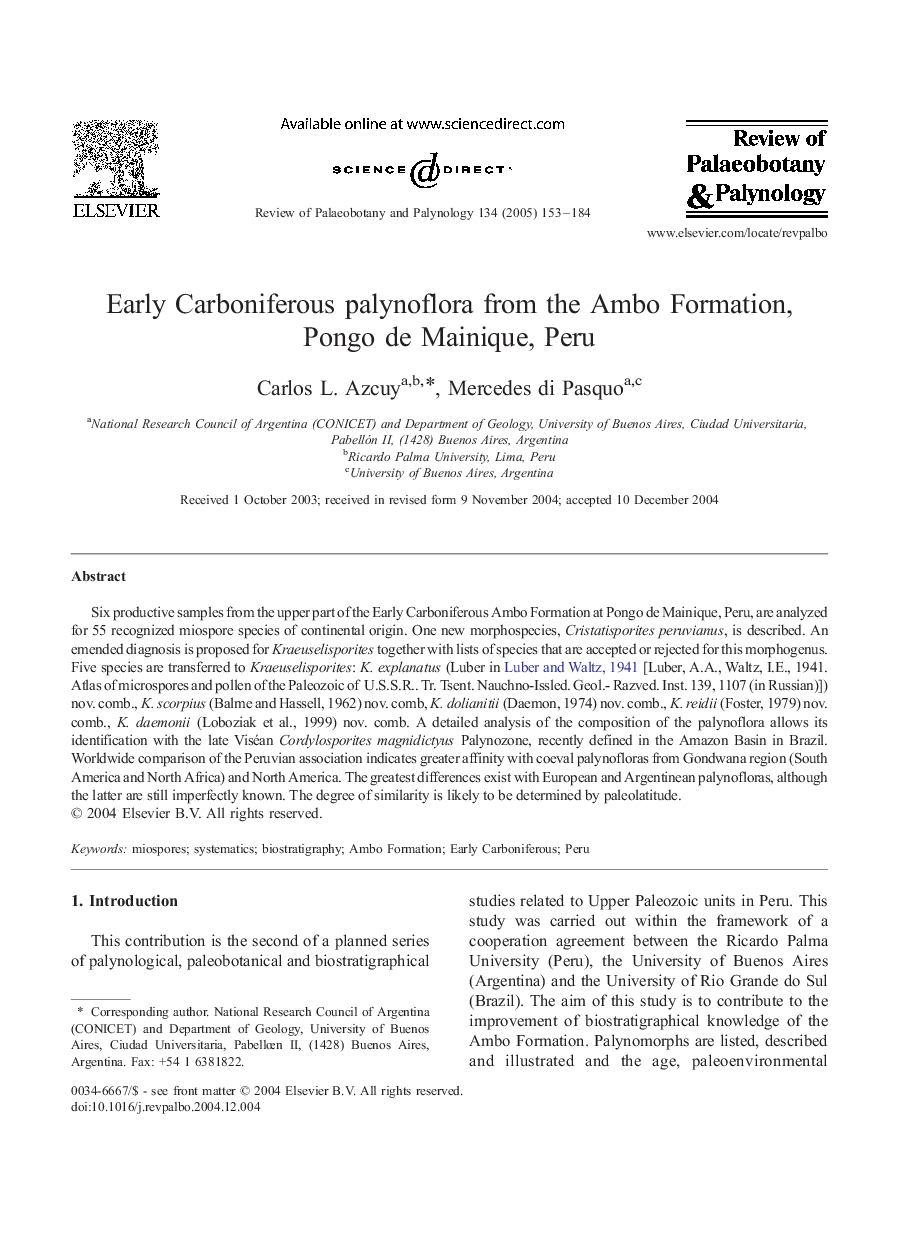| Article ID | Journal | Published Year | Pages | File Type |
|---|---|---|---|---|
| 10122085 | Review of Palaeobotany and Palynology | 2005 | 32 Pages |
Abstract
Six productive samples from the upper part of the Early Carboniferous Ambo Formation at Pongo de Mainique, Peru, are analyzed for 55 recognized miospore species of continental origin. One new morphospecies, Cristatisporites peruvianus, is described. An emended diagnosis is proposed for Kraeuselisporites together with lists of species that are accepted or rejected for this morphogenus. Five species are transferred to Kraeuselisporites: K. explanatus (Luber in Luber and Waltz, 1941 [Luber, A.A., Waltz, I.E., 1941. Atlas of microspores and pollen of the Paleozoic of U.S.S.R.. Tr. Tsent. Nauchno-Issled. Geol.- Razved. Inst. 139, 1-107 (in Russian)]) nov. comb., K. scorpius (Balme and Hassell, 1962 [Balme, B.E., Hassell, G.W., 1962. Upper Devonian spores from the Canning Basin, Western Australia. Micropaleontology 8, 1-28]) nov. comb, K. dolianitii (Daemon ,1974 [Daemon, R.F., 1974. Palinomorfos-guias do Devoniano Superior e CarbonÃfero Inferior das bacias do Amazonas e ParnaÃba. An. Acad. Bras. Cienc. 46, 549-587]) nov. comb., K. reidii (Foster, 1979 [Foster, C.B., 1979. Permian plant microfossils of the Blair Athol coal measures, Baralaba coal measures and Basal Rewan formation of Queensland. Geol. Surv. of Queensland, Publ. 372, Paleontol. Paper 45, 1-244]) nov. comb., K. daemonii (Loboziak et al., 1999 [Loboziak, S., Melo, J.H.G., Playford, G. Streel, M., 1999. The Indotriradites dolianitii Morphon, a distinctive group of miospore species from the Lower Carboniferous of Gondwana. Rev. Palaeobot. Palynol. 107, 17-22]) nov. comb. A detailed analysis of the composition of the palynoflora allows its identification with the late Viséan Cordylosporites magnidictyus Palynozone, recently defined in the Amazon Basin in Brazil. Worldwide comparison of the Peruvian association indicates greater affinity with coeval palynofloras from Gondwana region (South America and North Africa) and North America. The greatest differences exist with European and Argentinean palynofloras, although the latter are still imperfectly known. The degree of similarity is likely to be determined by paleolatitude.
Related Topics
Physical Sciences and Engineering
Earth and Planetary Sciences
Palaeontology
Authors
Carlos L. Azcuy, Mercedes di Pasquo,
